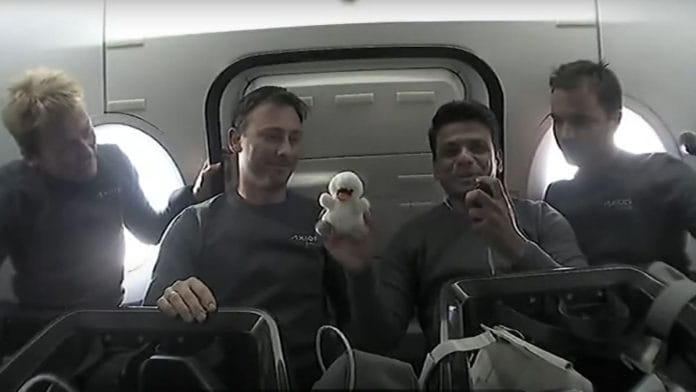New Delhi: It is not just an Indian in space after 41 years, the Axiom-4 is a momentous mission for Poland and Hungary too. Along with Shubhanshu Shukla, Sławosz Uznański-Wiśniewski and Tibor Kapu became the first men from Poland and Hungary respectively to set foot in the International Space Station on Thursday. Both Poland and Hungary are members of the European Space Agency and will be conducting research experiments aboard the ISS, along with Shukla.
Much like India, the last time either Hungary or Poland sent a human to space, it was aboard a Soviet spacecraft.
While Rakesh Sharma travelled on the Soyuz T-10 in 1984, Hungarian astronaut Bertalan Farkas became the first in his country to go to space in 1980 aboard the Soyuz-36 spacecraft. For Poland, the astronaut was Mirosław Hermaszewski, who took the Soyuz-30 to space in 1978. Charles Simonyi, a billionaire of Hungarian origin, went to space in 2007 aboard the Soyuz Capsule. However he was already an American citizen at the time.
Since then, neither of these countries has sent a human into space until now. The two astronauts, Uznański-Wiśniewski and Kapu, are engineers who have spent a considerable time in space research. Kapu, who is 33, is a recreational skydiver and the youngest person in the Ax-4 crew. Uznański-Wiśniewski meanwhile is a mountaineer who worked as a scientist at CERN before becoming an astronaut.
Uznański-Wiśniewski is at the ISS representing the European Space Agency, and will be responsible for 15 experiments ranging from muscle stimulation to the mental health of astronauts in space.
“Dear Poles, today we are taking a giant step towards Poland’s technological future,” said Uznański-Wiśniewski in Polish in his video message from the Dragon spacecraft. “Let this mission be the beginning of an era in which our courage and perseverance will shape a modern Poland for us and for future generations,” he added.
Kapu, on the other hand, is representing the HUNOR Mission, which is the Hungarian to Orbit programme, an independent mission of the Hungarian Space Office. He will be working on 24 research projects of the HUNOR Mission, to “deepen” Hungary’s understanding of space. With their combined research endeavours, Ax-4 Mission is the most scientifically inclined Axiom Mission yet, with a total of 60 experiments to be conducted in the duration of 2 weeks onboard.
“I am incredibly grateful and proud to be here as a Hungarian, and it was a special feeling to see our small country from space just a few minutes ago. I hope you will be just as proud of this mission as I am. See you soon,” said Tibor Kapu in Hungarian during the in-flight video message update.
History of Hungary and Poland’s spaceflight missions
Both Poland and Hungary’s initial space programmes were influenced by the Soviet Union, since they were members of the Interkosmos multinational space programme developed by the USSR in 1967. Hungary became the 7th nation in the world to send a man to space under the Interkosmos programme. Poland, which specialised in satellite development, collaborated with the USSR for measuring solar radiation in space since 1973.
After the collapse of the USSR, both countries worked to develop their individual space programmes and eventually joined the European Space Agency—Poland in 2012 and Hungary in 2015.
For the Axiom Mission, the Polish Space Agency (POLSA) signed an agreement with the private US company in 2023 to send their astronaut aboard the Axiom-4 Mission. Uznański-Wiśniewski was the most likely candidate because he was the only Polish astronaut in the European Space Agency’s Astronaut Corps then.
Similarly, the Hungarian Ministry of Foreign Affairs and Trade signed an agreement with Axiom Space in 2022 to help develop their HUNOR programme, which then lead to Kapu’s selection for the Ax-4 Mission.
(Edited by Viny Mishra)






